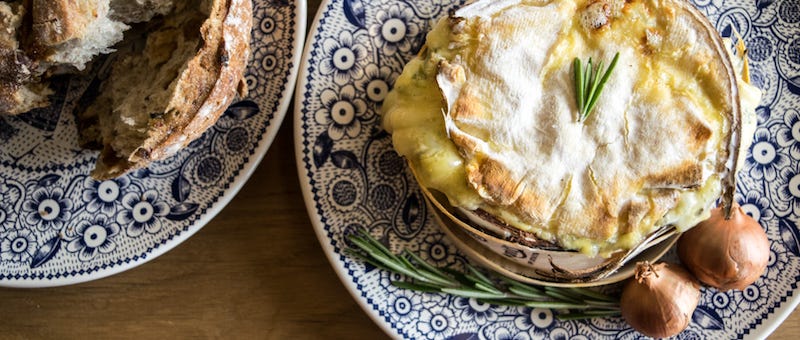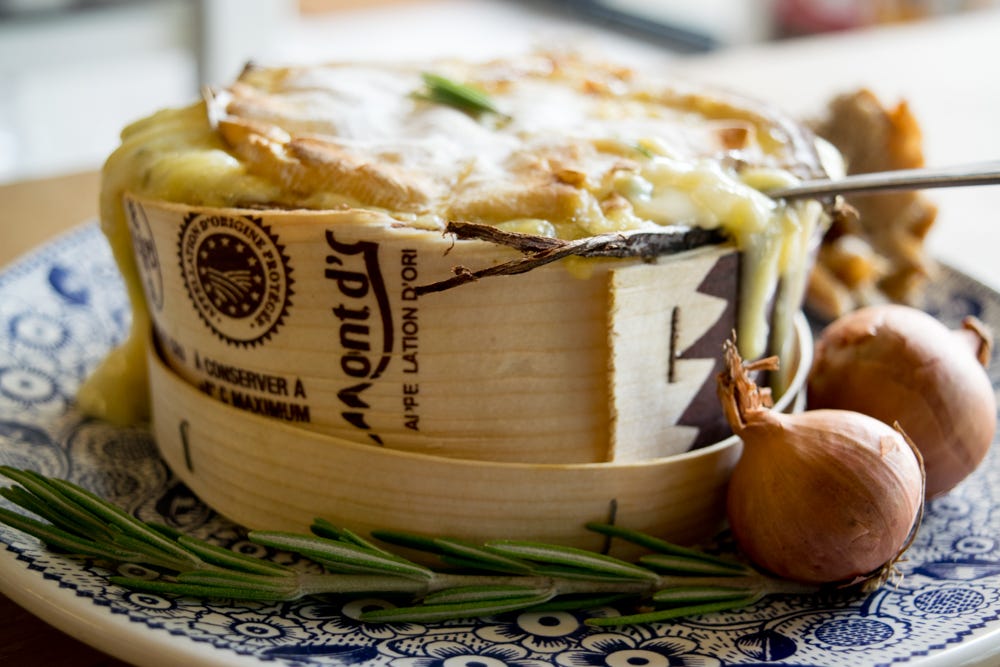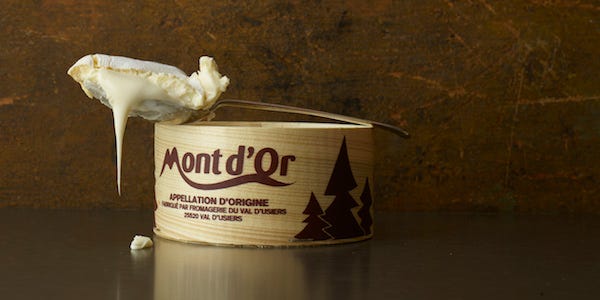Vacherin Mont d'Or
-

Vacherin Mont d’Or season is upon us, but how do you eat it? You may choose to enjoy it at room temperature, but for a truly special experience, why not try baking the cheese?
We’ve called upon the knowledge of our Cheese Care Manager, Luke, for his favourite Vacherin Mont d’Or recipe. He has delivered this full-flavoured dish that will wow friends and family alike.
Ingredients
3 Shallots, finely chopped
2 Sprigs of rosemary, finely chopped
2 Garlic cloves, crushed
20g Butter
30ml Jura Chardonnay
1 Whole Vacherin Mont d'Or, 450gMethod
1. Warm your oven to 180°C (fan 160°C).
2. Prepare the Vacherin box by removing the wood with a serrated knife to just below the top of the rind.
3. Soften the shallots and crushed garlic in butter. Finish with rosemary and Jura Chardonnay. Then cook off until the wine is evaporated. Allow the mixture to cool until it reaches room temperature.
4. Remove the top rin -
Blog Vacherin Mont d'Or
It’s back! Vacherin Mont D’or, the spoonable one, is now in stock. Made in the shadow of the Mont d’Or in France, this cheese has become famous throughout the world.
Vacherin Mont d’Or is only made between the 15th August and 15th March, when the cows have come down the mountain from their high summer pastures, and their milk is too fatty and not plentiful enough to make whole Comté wheels. The Comté co-operatives then turn their hands to making this truly seasonal cheese. Our version is made by Fromagerie Val d’Usiers, and it is an outstanding example: rich and voluptuous, with a resinous flavour from the spruce bark that encircles it.
There are only 11 producers, and our cheeses are made by one of the even fewer small artisan co-operatives. (Most cheese-makers in this area operate as co-ops, and have done for centuries, so that they may pool enough milk from ea


